Good contracts are packages saved on the blockchain that run when sure circumstances are predetermined or referred to as. Good contracts are used to automate agreements, get rid of intermediaries, and create a extra decentralized community free from exterior affect.
On this article, we’ll take a look at a selected technique known as nested contracts, or contracts with a contract. Particularly, we’ll overview methods to create a number of contracts and name capabilities from inside a father or mother contract. We’ll exhibit methods to name a nested contract from the father or mother contract and in addition methods to name it from an exterior contract. The entire sensible contract examples used on this article are written in Solidity.
Let’s dive in.
Bounce forward:
Stipulations
In an effort to observe together with the tutorial portion of this text, you need to have the next:
Why nest a contract inside a contract?
There are a number of explanation why it could be advantageous to incorporate a wise contract inside one other sensible contract:
- Safety: Nesting contracts may also help isolate the danger of vulnerabilities; when all contract variables are included inside one sensible contract, it’s simpler to overlook an error or weaknesses that could possibly be exploited by a nasty actor
- Segmentation: A number of contracts allow us to interrupt the principle contract into smaller items with much less complicated logic
- Reusable code: Many fundamental contract capabilities are available within the type of open supply, reusable logic by corporations like OpenZeppelin; benefiting from their code can present important growth time financial savings
Can sensible contracts work together with one another?
Good contracts are capable of create or deploy different contracts. They will additionally name capabilities of different sensible contracts. On this article, we’ll study two examples of calling a nested sensible contract:
- Contract inside a contract: When contracts are nested inside one most important contract, they or their capabilities might be referred to as from one of many different contracts
- Calling a nested contract from an exterior contract: Contracts can be referred to as externally; for instance, you would use a constructor operate to name an exterior contract
Demo: Calling a nested sensible contract from the father or mother contract
For our first instance, let’s create after which deploy a baby contract inside a father or mother contract.
Creating the nested contract
To start out, we’ll open Remix and create the father or mother contract. For this instance, we’ll make a mortgage contract; anybody could name this contract and request a mortgage.
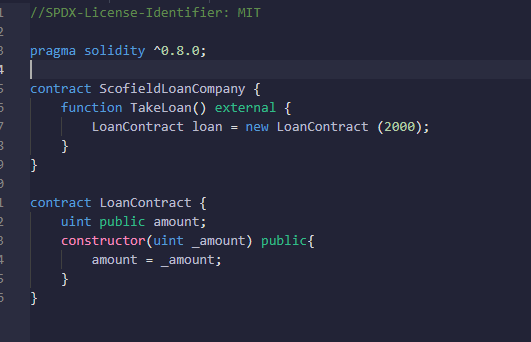
The primary line of the contract is our License. This is essential, as not calling it is going to increase an error:
//SPDX-License-Identifier: MIT pragma solidity ^0.8.0;
We’re utilizing Remix as a compiler, and it has completely different variations. Confirm the model that you just’re utilizing; if the model doesn’t tally with the compiler, you’ll get an error. On this instance, we’re utilizing Remix model ^0.8.0 and above. The ^ image signifies “above”.
As proven under, the ParentLoanCompany contract takes a operate referred to as TakeLoan that takes exterior attributes. Exterior modules can be utilized to introduce customized or third-party APIs to a Web3 occasion. Exterior modules are merely lessons whose strategies and properties might be made out there inside the Web3 occasion.
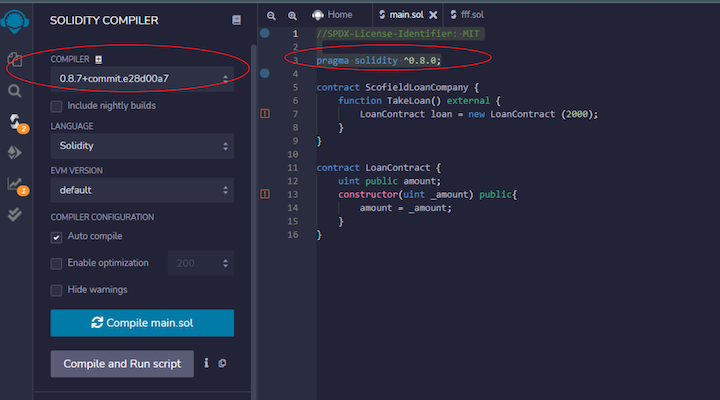
contract ParentLoanCompany {
operate TakeLoan() exterior {
LoanContract mortgage = new LoanContract (2000);
}
}
We used the exterior attribute with a purpose to name our youngster contract.
Earlier than we do this, let’s create our youngster contract contained in the father or mother contract:
contract ChildLoanContract {
uint public quantity;
constructor(uint _amount) public{
quantity = _amount;
}
}
Our ChildLoanContract is the contract that the consumer instantly interacts with, and we name the kid contract into the father or mother contract. Let’s overview the fundamental particulars of the kid contract:
uint public quantity;
constructor(uint _amount) public{
We should make Solidity conscious that this contract offers with cash. To take action, we name the uint, which is an unsigned integer, and we make it public.
We create a constructor that runs first, and as soon as when the contract known as, we give an argument of _amount, which implies whoever calls this operate should specify the quantity they want to borrow.
Lastly, we name quantity = _amount; which implies no matter quantity the consumer places in turns into the mortgage quantity that’s made public.
Now, let’s return to the ParentLoanCompany contract and add the under code snippet to attach each contracts.
LoanContract mortgage = new LoanContract (2000);
We name the ChildLoanContract by calling the LoanContract and provides it a reputation mortgage. This is essential once we need to later name the deal with of the borrower. That is equal to new which is the operate that creates a brand new contract of sort LoanContract.
Deploying the nested contract
After deploying the ParentLoanCompany contract with the Remix IDE, we should always see two contracts on the Contract panel.
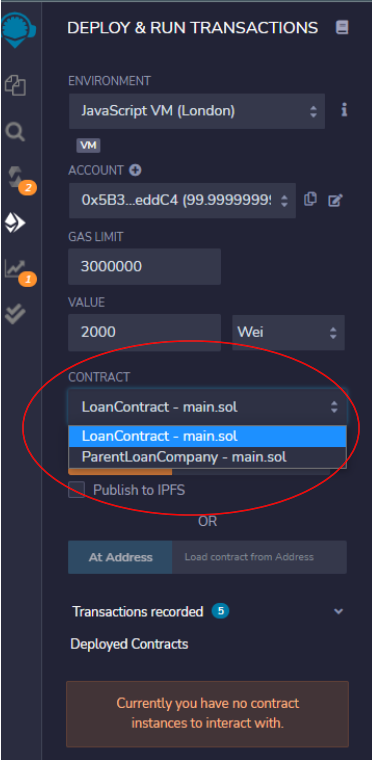
Demo: Calling a nested sensible contract from an exterior contract
Now, let’s check out how an exterior contract can name a nested contract.
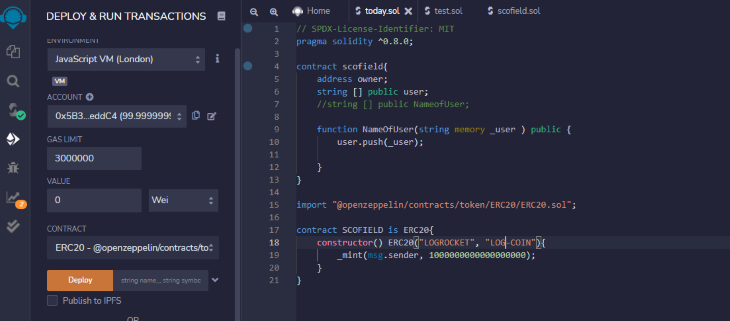
Creating the contracts
Identical to the earlier instance, the primary line of code is our License. If we don’t present this, Remix will throw an error.
Subsequent, we specify our model and compiler; Remix makes use of this compiler to check our challenge and if the compiler and the model are completely different, we’ll get an error.
// SPDX-License-Identifier: MIT pragma solidity ^0.8.0;
We’ll create a contract, referred to as scofield, that permits the consumer to retailer an deal with within the string [] public consumer array.
We additionally create an argument within the NameOfUser operate that shops the identify {that a} caller of the contract supplies contained in the _user.
contract scofield{
deal with proprietor;
string [] public consumer;
operate NameOfUser(string reminiscence _user ) public {
consumer.push(_user);
}
}
Now, let’s create the nested contract.
We’ll create one other contract inside the identical file that mints our coin, LOGROCKET. The coin’s image is LOG_COIN. This coin will probably be minted utilizing a contract we imported from OpenZeppelin.
In our scofield contract, we’ll import the OpenZeppelin contract and paste the next command into our Remix editor:
import "@openzeppelin/contracts/token/ERC20/ERC20.sol";
Subsequent, we name the exterior COINMAKER contract. We specify that it’s an ERC-20 contract, after which we name a constructor operate which we give an argument of identify of coin, LOGROCKET, and image of coin, LOG-COIN.
Our constructor operate should run earlier than some other operate. It has a _mint argument which tells the contract what number of cash the msg.sender can mint. We specified that the msg.sender can mint 1000000000000000000 Wei, which is the smallest Ethereum unit.

Changing Ethereum currencies
As a aspect be aware, we should always speak for a second about Ethereum items. On this contract, we’re creating one Ether, however we’re utilizing the smallest Ethereum unit (Wei) to symbolize the worth.
Right here’s a helpful tool for converting different Ethereum units, equivalent to Wei, Gwei, Finney, and Ether.
Deploying and calling the nested contract
Now it’s time to deploy our contract. Within the Remix DEPLOY & RUN panel, we see the contract dropdown and a listing of contracts. These contracts are pulled in alongside our COINMAKER and scofield contracts, that are the 2 contracts we created.
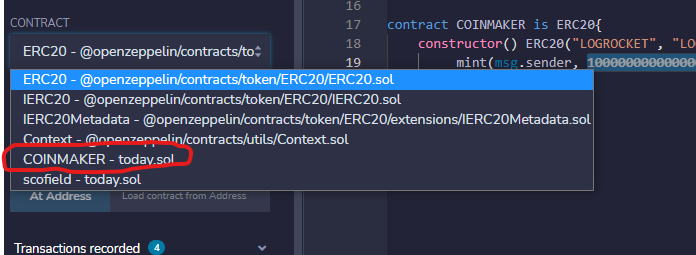
Now, let’s deploy the COINMAKER contract.
Should you attempt to deploy with out first putting in your MetaMask pockets, you’ll see one thing like this:

Subsequent, let’s speak concerning the gasoline payment and testnet faucet. To transact this contract, you’ll be able to request check ETH from a testnet. Within the article, I used Rinkeby, but it surely’s being depreciated. Should you want, you need to use Goerli as an alternative.
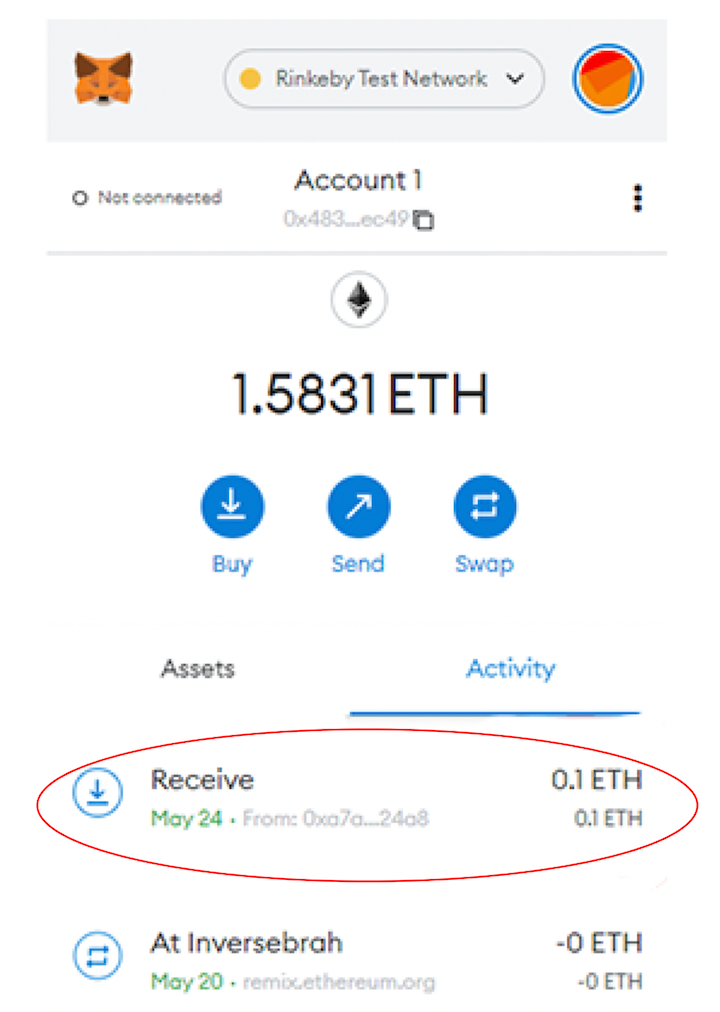
As proven within the above picture, you’ll get 0.1 ether from the testnet, which will probably be greater than sufficient to pay the gasoline payment. Nonetheless, you can also make the request a number of instances if you wish to hold training.
Earlier than deploying the contract, be sure to change the Surroundings from Javascript VM to Injected Web3.
Now, let’s deploy the contract once more. This time you need to see the next MetaMask notification:
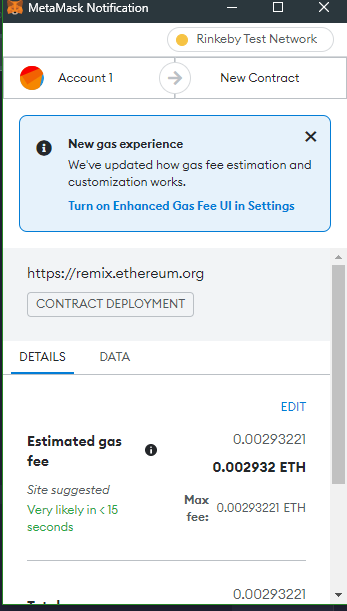
On the backside of the panel, we see that the creation of COINMAKER is pending.
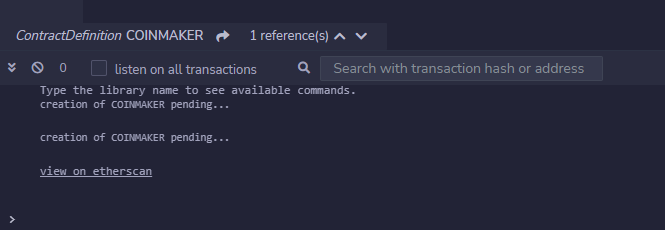
Subsequent, click on on view on etherscan. This can open Etherscan, the place we are able to see the coin we simply created.
We are able to see the identify of the token, LOGROCKET, in addition to the quantity of gasoline that was used to deploy this contract.
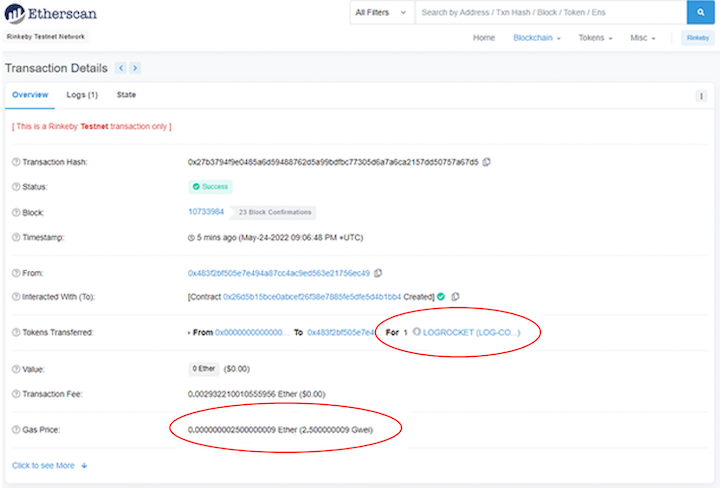
Click on on the identify of the token to see extra particulars:

Right here we are able to see the variety of individuals holding the token (only one proper now).
Now, let’s get again to our contract.
Every operate inside our contract has a function. Right here’s a abstract:
Approve: Permits the sender to maintain a specific amount of funds on the blockchain with an deal with that may withdraw that specified quantityDecreaseAllowance: Permits us to lower the quantity we set within theApproveoperate, so the contract created may scale back the required quantity if was scheduled too excessiveIncreaseAllowance: Will increase the allotted funds within the blockchainSwitch: Permits the contract proprietor to switch funds within the contract to a different consumerTransferFrom: Permits the proprietor to switch from theApproveoperate, moderately than from the proprietor funds, after being accredited into the blockchain
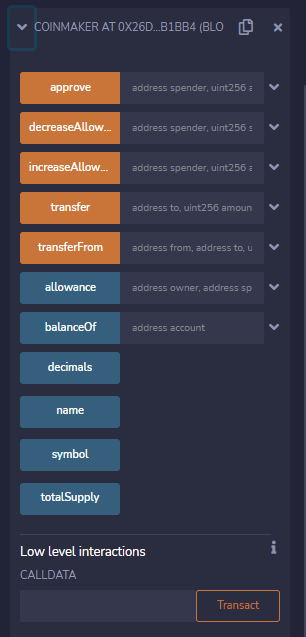
That’s it; you simply created your individual Web3 coin!
Conclusion
Utilizing a number of sensible contracts can present extra safety to tasks. On this article, we used the instance of a mortgage sensible contract to exhibit calling a nested contract from the father or mother contract. We additionally used the instance of a customized coin minting contract to exhibit calling an exterior contract from a nested contract.
Creating contracts inside contracts, or nested sensible contracts, is helpful for limiting what a consumer can do, and what they will name.
Be part of organizations like Bitso and Coinsquare who use LogRocket to proactively monitor their Web3 apps
Consumer-side points that affect customers’ means to activate and transact in your apps can drastically have an effect on your backside line. Should you’re considering monitoring UX points, robotically surfacing JavaScript errors, and monitoring sluggish community requests and part load time, try LogRocket. https://logrocket.com/signup/
https://logrocket.com/signup/
LogRocket is sort of a DVR for internet and cellular apps, recording every part that occurs in your internet app or web site. As an alternative of guessing why issues occur, you’ll be able to mixture and report on key frontend efficiency metrics, replay consumer classes together with utility state, log community requests, and robotically floor all errors.
Modernize the way you debug internet and cellular apps — Start monitoring for free.








